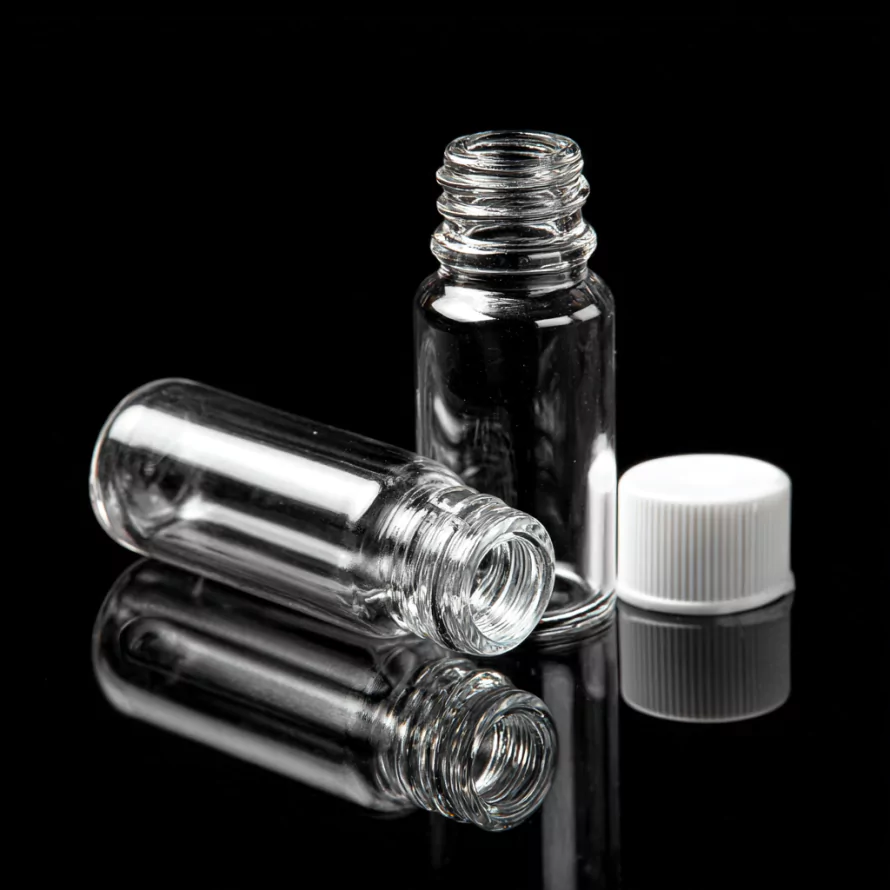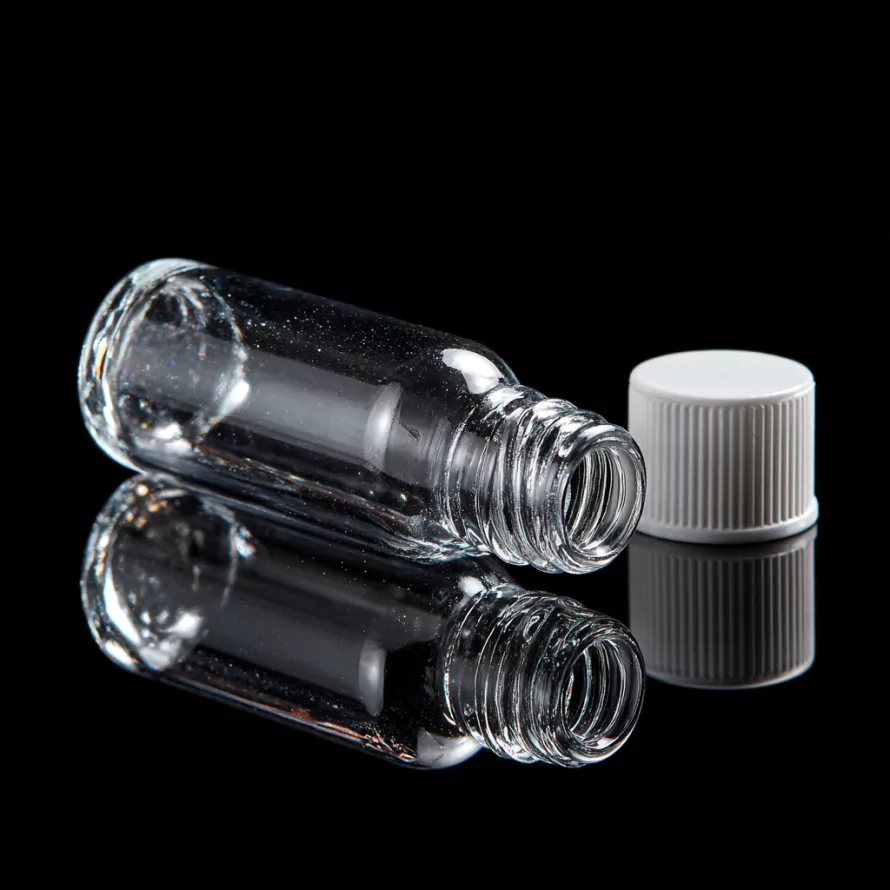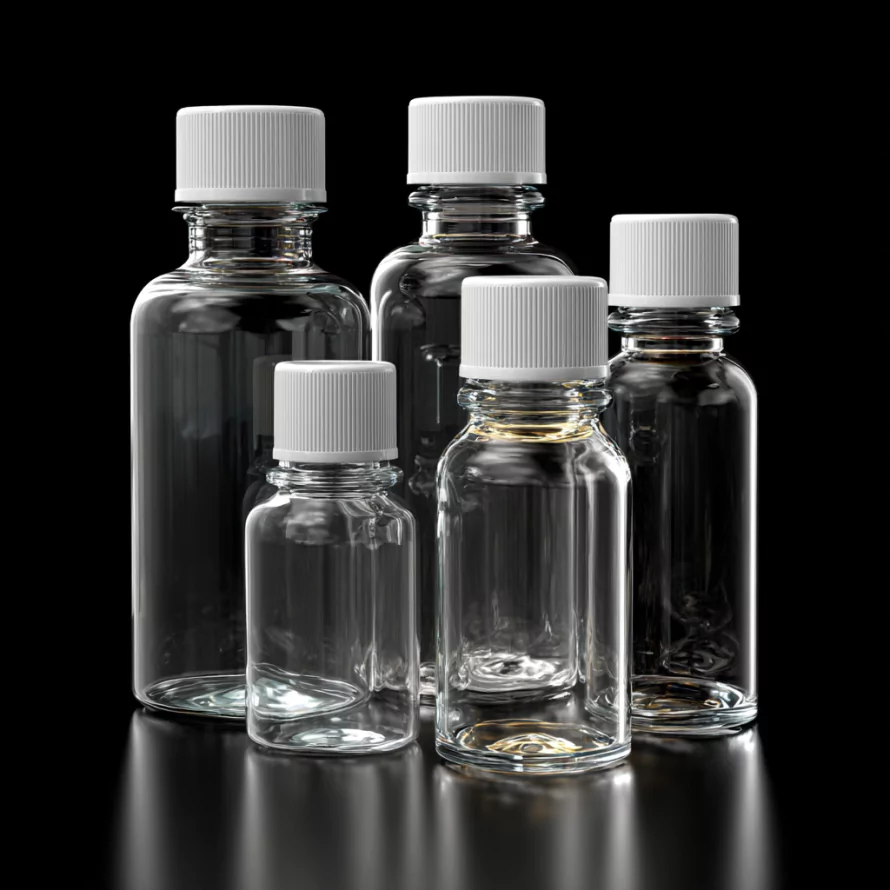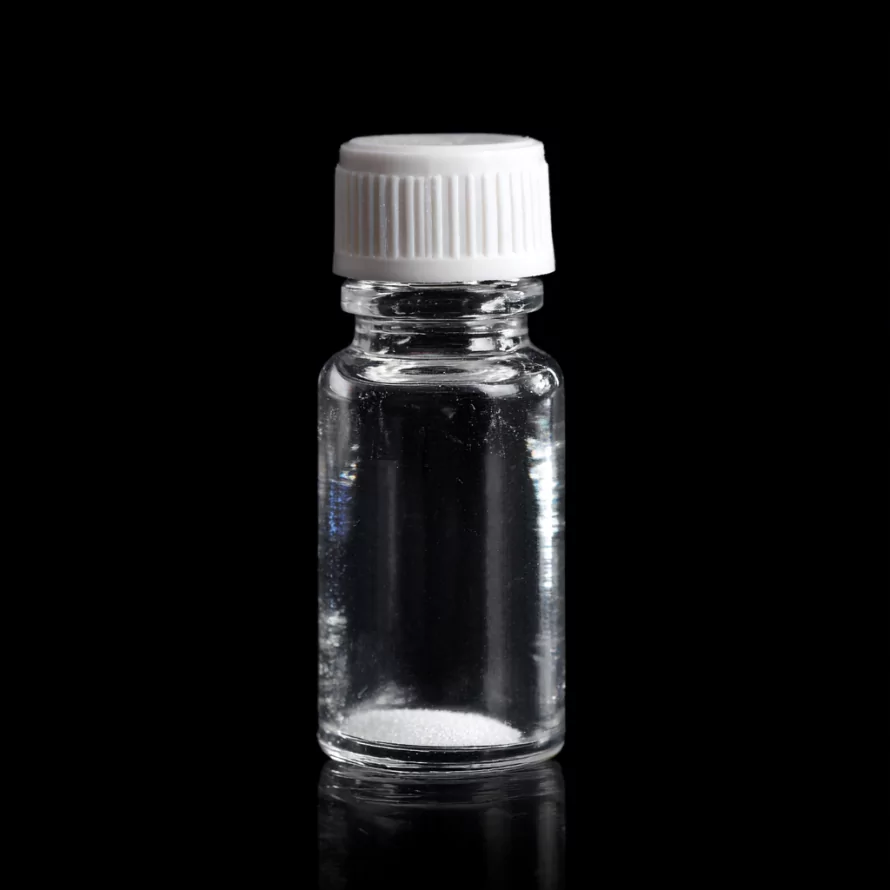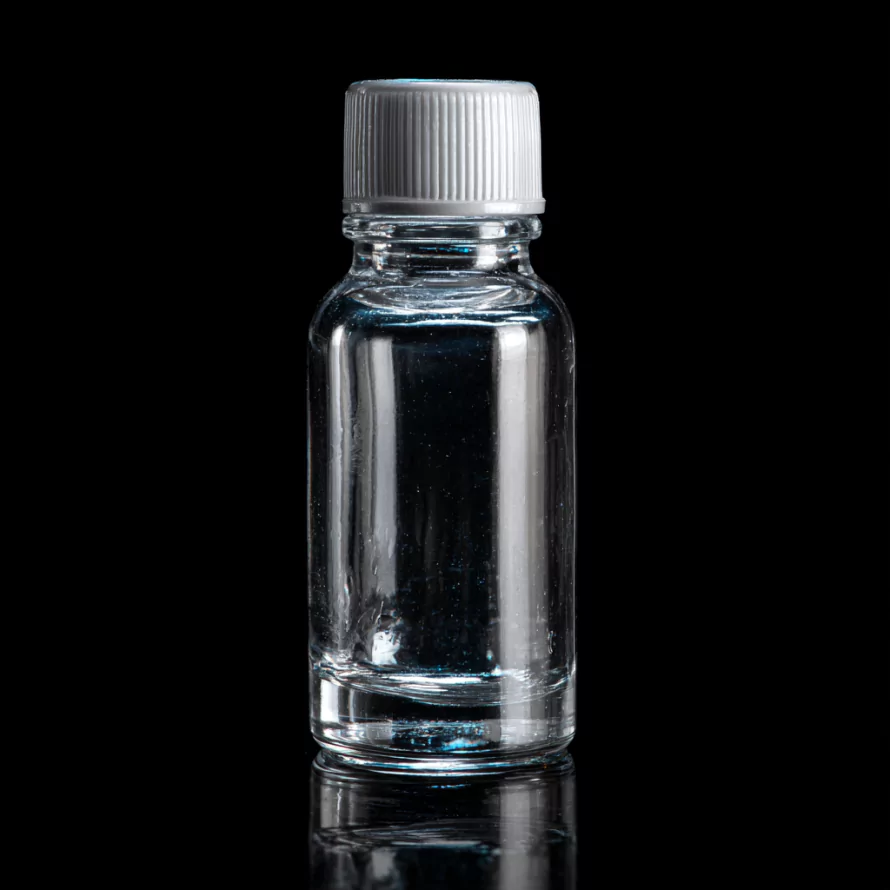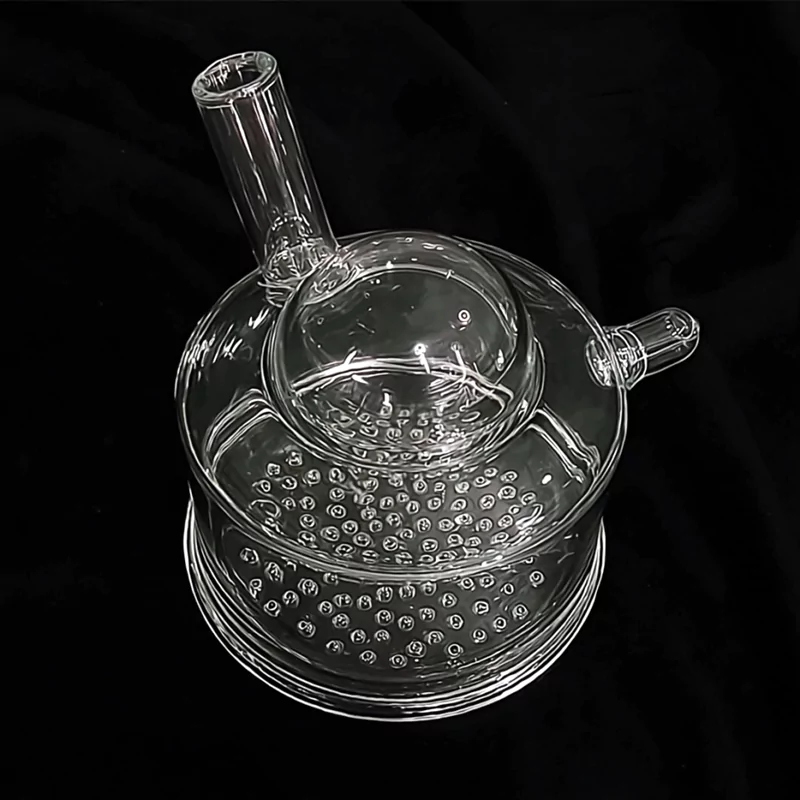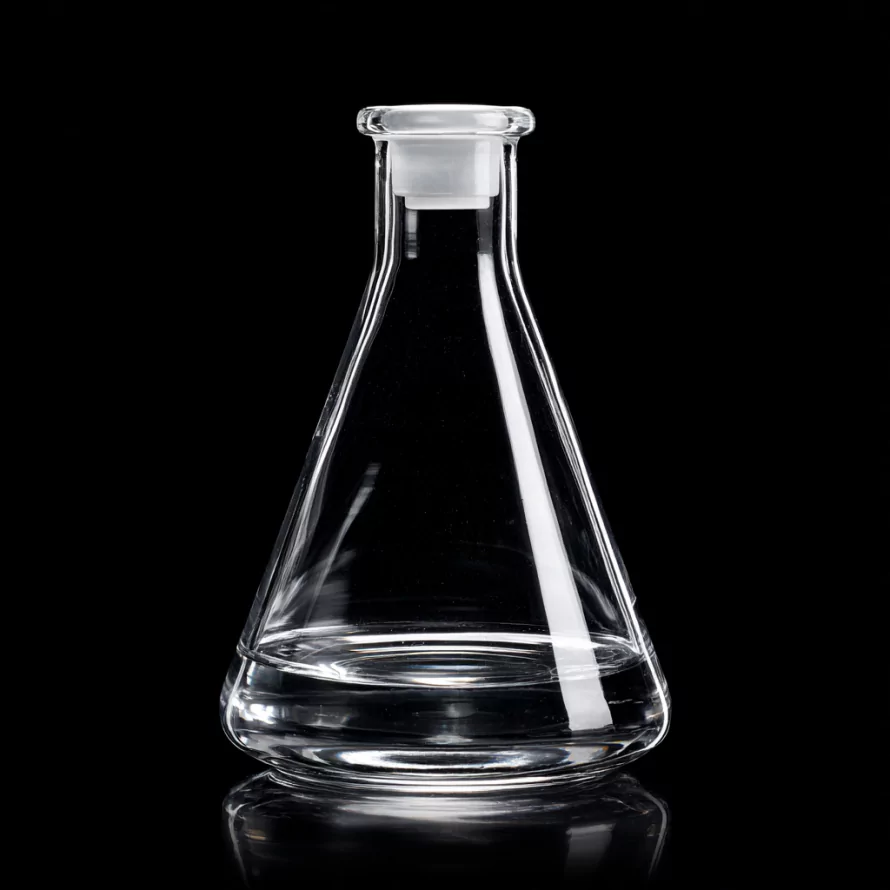- Home
- /
- Types
- /
- Quartz Bottle
- /
- Non-reactive Quartz Reagent Bottle...
Non-reactive Quartz Reagent Bottle with Screw Cap for High-purity Applications -TOQUARTZ®
Ideal for research facilities, analytical laboratories, and chemical processing environments requiring high-performance containment solutions for corrosive substances.
Features of Quartz Reagent Bottle with Screw Cap
TOQUARTZ® quartz reagent bottles are engineered from high-purity fused quartz to meet the demanding requirements of modern laboratory applications. These containers provide exceptional performance characteristics for both standard and specialized chemical handling tasks.
Chemical Stability
Made from 99.99% SiO₂ fused quartz, these bottles prevent metal impurity leaching that could cause alkaline substances to dissolve, making them ideal for long-term storage. They resist acids, alkalis, molten salts, and fluorinated gases.
Thermal Performance
Quartz reagent bottles exhibit exceptional thermal stability up to 1200°C and can withstand rapid heating and cooling cycles. This makes them suitable for applications with dramatic temperature fluctuations without risk of thermal shock failure.
Optical Properties
Our quartz bottles offer excellent optical performance across a wide spectrum, from infrared to ultraviolet, including visible light. This transparency allows for visual monitoring of reactions and precise spectroscopic applications.
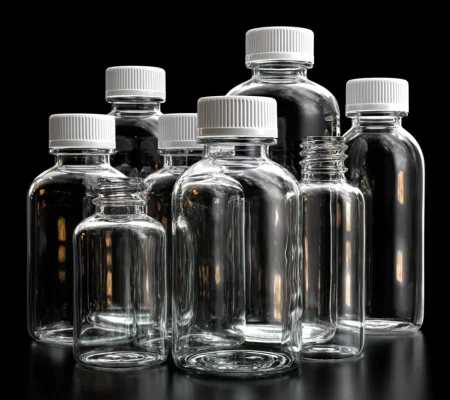
- 99.99% SiO₂ Purity
- Chemical Resistance
- Precision Joints
Technical Specifications & Dimensions of Quartz Reagent Bottle
Technical Specifications of Fused Quartz Reagent Bottle with Screw Cap
| Property | Value | Notes |
| Material | JGS2 Fused Quartz | Electric-fusion process |
| SiO₂ Content | 99.99% | Ultra-high purity |
| Manufacturing Process | One-piece Molding | No joints or seams |
| Maximum Operating Temperature | 1200°C | With appropriate caps removed |
| Thermal Expansion Coefficient | 5.5 × 10⁻⁷/K | Excellent thermal shock resistance |
| Density | 2.2 g/cm³ | Standard density |
| Electrical Resistivity | ≥ 10⁷ Ω·cm | Excellent insulation properties |
| Chemical Resistance | Excellent | Resists most acids, bases, and solvents |
| UV Transmission | High | Transparent from IR to UV range |
Standard Sizes of Quartz Glass Reagent Bottle with Screw Cap
| Model | Capacity (ml) | Body Diameter (mm) | Height (mm) | Wall Thickness (mm) | Cap Type | SiO2 Cobtent(%) |
| AT-SJP-1001 | 2ml | 12 | 32 | 1.5 | Plastic | 99.99 |
| AT-SJP-1002 | 4ml | 15 | 45 | 2.5 | Plastic | 99.99 |
| AT-SJP-1003 | 5ml | 18 | 40 | 2.5 | Plastic | 99.99 |
| AT-SJP-1004 | 7ml | 20 | 50 | 3 | Plastic | 99.99 |
| AT-SJP-1005 | 10ml | 22 | 50 | 3 | Plastic | 99.99 |
| AT-SJP-1006 | 15ml | 22 | 70 | 3 | Plastic | 99.99 |
| AT-SJP-1007 | 20ml | 28 | 57 | 3 | Plastic | 99.99 |
| AT-SJP-1008 | 30ml | 28 | 72.5 | 3 | Plastic | 99.99 |
| AT-SJP-1009 | 40ml | 28 | 105 | 3 | Plastic | 99.99 |
| AT-SJP-1010 | 50ml | 34 | 86 | 3 | Plastic | 99.99 |
| AT-SJP-1011 | 100ml | 40 | 115 | 3 | Plastic | 99.99 |
Customized Sizes of Quartz Glass Reagent Bottle with Screw Cap
| Model | Capacity (ml) | Body Diameter (mm) | Height (mm) | Wall Thickness (mm) | Cap Type | SiO2 Cobtent(%) |
| AT-SJP-1012 | 5ml | 20 | 39 | 2 | PTFE | 99.99 |
| AT-SJP-1013 | 10ml | 20 | 65 | 2 | PTFE | 99.99 |
| AT-SJP-1014 | 20ml | 30 | 66 | 2.5 | PTFE | 99.99 |
| AT-SJP-1015 | 20ml | 23 | 79 | 2 | PTFE | 99.99 |
| AT-SJP-1016 | 30ml | 30 | 76 | 3 | PTFE | 99.99 |
| AT-SJP-1017 | 40ml | 30 | 100 | 3.5 | PTFE | 99.99 |
| AT-SJP-1018 | 50ml | 35 | 90 | 3 | PTFE | 99.99 |
| AT-SJP-1019 | 50ml | 30 | 115 | 3 | PTFE | 99.99 |
| AT-SJP-1020 | 60ml | 30 | 130 | 3 | PTFE | 99.99 |
TOQUARTZ® Solving Challenges with Quartz Reagent Bottles
Quartz Reagent Bottles for Analytical Chemistry Labs
Key Advantages
-
Ultra-low ion leaching: <0.05 ppb Na⁺ after 24h in 10% HNO₃
Ensures accurate trace metal analysis in ICP-MS workflows. -
Surface roughness Ra ≤ 0.2μm for minimal analyte adsorption
Reduces sample loss and improves recovery in micro-volume assays. -
Compatible with piranha and HF cleaning without surface degradation
Enables aggressive decontamination between analytical runs.
TOQUARTZ® solution
A U.S.-based pharmaceutical QC lab experienced inconsistent ICP-MS results due to Na⁺ and B⁺ leaching from borosilicate containers, leading to 12% sample rejection. After switching to TOQUARTZ® quartz reagent bottles, background ion levels dropped below 0.02 ppb, improving analytical precision by 28% and reducing re-runs by 40% over a 3-month validation period.
Fused Quartz Reagent Bottles for Corrosive Waste Collection
Key Advantages
-
HF resistance validated at 48% concentration for 72 hours
Maintains structural integrity under prolonged exposure to hydrofluoric acid. -
Wall thickness ≥3.0mm for 50ml+ models ensures mechanical durability
Prevents rupture or leakage during high-volume acid waste storage. -
PTFE cap sealing remains stable at 200°C for 4 hours
Prevents vapor leakage in heated corrosive waste environments.
TOQUARTZ® solution
A Japanese semiconductor R&D facility reported 2–3 container failures per month using HDPE bottles for HF waste, causing $8,000/month in cleanup and downtime. After adopting TOQUARTZ® quartz reagent bottles with PTFE caps, failure rate dropped to zero over 6 months, and the lab saved over $45,000 in operational losses.
Quartz Glass Reagent Bottles for High-Temperature Reactions
Key Advantages
-
Thermal expansion coefficient: 5.5 × 10⁻⁷/K
Withstands rapid heating/cooling cycles without cracking or deformation. -
Maintains structural integrity at 1100°C for 2 hours continuous use
Suitable for high-temperature synthesis and calcination processes. -
No microfractures after 100 thermal cycles (RT ↔ 900°C)
Proven durability in repeated thermal stress environments.
TOQUARTZ® solution
A Polish materials science institute performing sol-gel synthesis at 950°C faced 18% vessel failure using aluminosilicate containers. After switching to TOQUARTZ® quartz reagent bottles, thermal cracking was eliminated. Over 50 thermal cycles, the lab reported zero failures and a 15% increase in batch yield due to uninterrupted reaction continuity.
TOQUARTZ® Customization Services for Quartz Reagent Bottle with Screw Cap
Dimensional Customization
Custom bottle sizes, volumes, wall thicknesses, and neck dimensions tailored to your specific requirements. Our precision manufacturing allows for tolerance control up to ±0.1mm on many specifications.
- Custom capacity from 2ml to 100ml
- Wall thickness from 1.5mm to 3.5mm
- Custom neck diameter and threading
Material Variations
Choose from different quartz material options to match your application requirements. Our materials scientists can help select the optimal quartz formulation for your specific use case.
- Clear transparent quartz (standard)
- Ultra-high purity options for trace analysis
Engineering Support
Our technical team provides comprehensive design assistance for your custom quartz reagent bottle projects, from initial concept to final production drawings.
- Technical drawing assistance
- Material selection consultation
- Prototype development and testing
- Production scale optimization

Customization Process
Requirements Discussion
- We begin by understanding your specific needs, including dimensions, material properties, chemical resistance requirements, and usage environment.
Technical Design
- Our engineers develop detailed technical drawings for your approval, including all critical dimensions and material specifications.
Prototype Development
- For new designs, we create prototype samples for your evaluation and testing before proceeding with full production.
Quality Control Testing
- Rigorous testing for dimensional accuracy, material purity, and performance characteristics to ensure your specifications are met.
Usage Guidelines of Quartz Reagent Bottle with Screw Cap
Proper handling and maintenance of quartz reagent bottles ensures maximum performance and longevity. The following guidelines will help you optimize your use of these specialized laboratory containers.
Handling Recommendations
-
Initial Cleaning:
Before first use, wash with diluted acid solution (5-10% HCl), followed by multiple rinses with deionized water. -
Temperature Transitions:
While quartz has excellent thermal shock resistance, gradual temperature changes are recommended for thick-walled bottles to prevent thermal stress. -
Cap Compatibility:
Plastic caps have a temperature limit of ~150°C, while PTFE caps can withstand up to 250°C. Remove caps for applications exceeding these temperatures. -
Physical Impact:
While quartz has high strength, it remains susceptible to impact damage. Avoid direct mechanical shock and store on cushioned surfaces.
Storage Recommendations
-
Chemical Storage:
While quartz is resistant to most chemicals, avoid storing strong alkalis (e.g., NaOH, KOH) at high concentrations and elevated temperatures for extended periods. -
Thread Maintenance:
Periodically inspect thread integrity. Apply a thin layer of compatible lubricant (PTFE-based) for caps that will experience frequent thermal cycling. -
Light-Sensitive Materials:
For photosensitive substances, use opaque quartz bottles or store clear bottles in dark conditions. -
Cleaning Protocol:
For routine cleaning, use dilute acid solutions rather than abrasive materials that could scratch the surface and reduce optical clarity.
Need Technical Assistance with Quartz Reagent Bottles?
Why Partner with TOQUARTZ
Direct Factory Advantage
As a direct manufacturer, we can cut out the numerous intermediate links.
Engineering Expertise
Technical team guides clients from material selection to design optimization, translating specs into deliverables.
Flexible Manufacturing
Handling standard & custom orders via small-batch expertise and prototyping rigor to meet urgent deadlines.
Quality
Assurance
Pre-shipment 3-step validation:
1. dimensional accuracy,
2. material purity ,
3. performance thresholds
Global Supply Chain
Reliable global logistics to industrial hubs (DE/US/JP/KR priority) with trackable milestones.
Releted Products
As a specialized manufacturer with direct factory capabilities, TOQUARTZ provides both standard and custom quartz solutions with engineering support throughout the specification and implementation process.
FAQ
Q: What is a quartz reagent bottle used for?
A: Quartz reagent bottles are used for storing high-purity chemicals, corrosive substances, and reactive compounds that require exceptional chemical resistance and thermal stability. They’re particularly valuable for applications where avoiding contamination is critical, such as analytical chemistry, materials synthesis, and semiconductor processing.
Q: What is the temperature resistance of quartz lab bottles?
A: TOQUARTZ® quartz reagent bottles can withstand temperatures up to 1200°C when used without caps. This exceptional thermal stability allows for applications involving rapid temperature changes that would cause conventional glass to crack. Note that plastic caps have a temperature limit of approximately 150°C, while PTFE caps can withstand up to 250°C.
Q: Can quartz bottles be used for acid waste?
A: Yes, quartz reagent bottles are excellent for collecting acid waste, including hydrofluoric acid (HF) that would attack borosilicate glass. Their exceptional chemical resistance makes them ideal for storing highly corrosive waste streams commonly generated in analytical and industrial laboratories.
Q: What cap options are available for quartz reagent bottles?
A: TOQUARTZ® quartz reagent bottles are available with either standard plastic screw caps (suitable for temperatures up to 150°C) or premium PTFE (Teflon) screw caps with enhanced chemical resistance and higher temperature capability (up to 250°C). Custom cap solutions can also be developed for specific applications.
Q: Where to buy custom quartz lab containers?
A: TOQUARTZ specializes in custom quartz laboratory containers, including reagent bottles with screw caps. As a direct manufacturer, we offer competitive pricing, technical design assistance, and rapid prototyping capabilities. Contact us directly for custom quotations and technical consultations for your specific requirements.
Contact our engineering team for technical consultation and pricing. We’ll help you select the optimal specifications for your application requirements.

